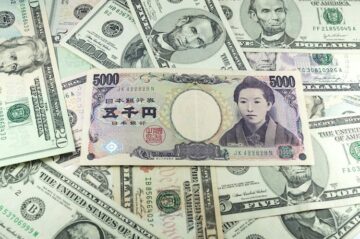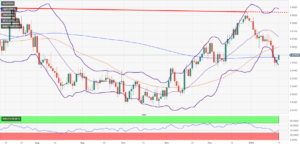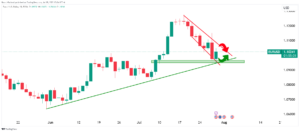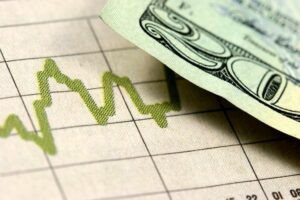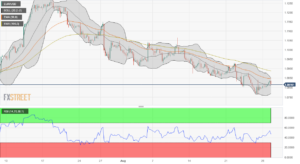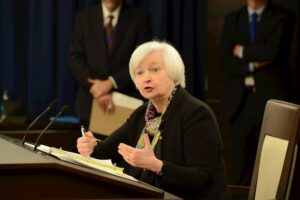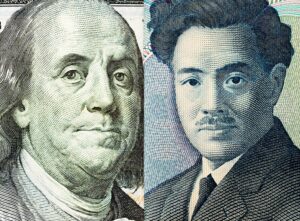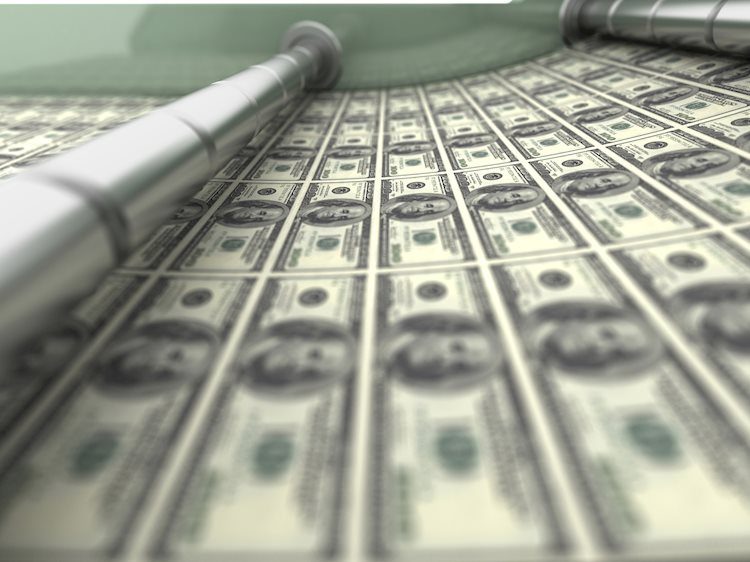
- The US Dollar (Index) dropped over 0.50% overnight after the Yen appreciated 4% in one day.
- Traders brace for Nonfarm Payrolls this Friday.
- The US Dollar Index has broken back below 104, though still holds gains for this week.
The US Dollar (USD) was having a crisis on Thursday after an outside event tripped the US Dollar Index (DXY) 0.50% into the red. The outside pressure came from the Japanese Yen which appreciated at one point nearly 4% intraday against the Greenback, and which is a major part of the basket of FX that makes up the US Dollar Index. The situation has stabilised for now, as traders focus on the US Jobs Report to be published later in the day.
On the economic front, the US Jobs Report will be the main event and will draw up all the attention. Traders will also need to be mindful of the University of Michigan Preliminary numbers coming out at the end of the European trading session. These numbers could either confirm or contradict the earlier Nonfarm Payroll (NFP) numbers and trigger volatility on the last trading day of the week.
Daily digest: NFP around the corner
- A standstill in the markets until 13:30 GMT when the US Nonfarm Payrolls report comes out:
- Nonfarm payrolls number for November is expected to rise from 150,000 to 180,000.
- Monthly Average Hourly Earnings are expected to head from 0.2% to 0.3.%.
- Yearly Average Hourly Earnings are to head from 4.1% to 4%.
- The US Unemployment Rate for November is to remain unchanged at 3.9%.
- A bit more detail on the Nonfarm Payroll number: Expectations by economists range from 45,000 to 275,000. Expect thus a much stronger US Dollar and an upward move in the DXY when the NFP number snaps above 275,000. Any number below 45,000 will trigger substantial US Dollar weakness with a devaluing Greenback across the board and a DXY which will be sinking lower.
- Near 15:00 GMT the University of Michigan will release its preliminary data findings for December:
- The Sentiment Index is expected to head from 61.3 to 62.
- The Inflation expectations are set to head from 3.2% to 3.1%.
- Equities in Asia are falling out of bed for a second straight day in the aftermath of the possible decision by the Bank of Japan to increase the benchmark rate, which has been negative for decades. European equities are going the other way and are mildly in the green. US equity futures are flat.
- The CME Group’s FedWatch Tool shows that markets are pricing in a 97.7% chance that the Federal Reserve will keep interest rates unchanged at its meeting next week.
- The benchmark 10-year US Treasury Note drops to 4.18%.
US Dollar Index technical analysis: Last bets to place for 2023
The US Dollar is stuck on a crucial crossroads that might trigger either substantially more and longer-term US Dollar appreciation or devaluation. In the runup towards Super Wednesday and Super Thursday when markets will hear from no less than four of the biggest central banks in the world, it looks like the Greenback might reestablish its label as King Dollar. Traders looking for clues would best keep an eye on the spread between the US 2-year yield and the German 2-year yield, which has been getting wider – a situation which is correlated with a stronger US Dollar.
The DXY is bouncing back up again after the decline on Thursday where the Japanese Yen appreciation was just too much to bear. The DXY could still make it further up, should employment data trigger a spike in US yields again. A two-tiered move – first with NFP and then University of Michigan numbers – could move the DXY back above 104.28, with the 200-day and 100-day Simple Moving Averages (SMA) turned over to support levels.
To the downside, the 200-day SMA has done a tremendous job in supporting the DXY with buyers coming in below 103.56 and pushing it back towards that same level near the US closing bell. If it fails this Friday, the lows of November near 102.46 is a level to watch. More downside pressure could bring into view the 100 marker, in a case where US yields sink below 4%.
US Dollar FAQs
The US Dollar (USD) is the official currency of the United States of America, and the ‘de facto’ currency of a significant number of other countries where it is found in circulation alongside local notes. It is the most heavily traded currency in the world, accounting for over 88% of all global foreign exchange turnover, or an average of $6.6 trillion in transactions per day, according to data from 2022.
Following the second world war, the USD took over from the British Pound as the world’s reserve currency. For most of its history, the US Dollar was backed by Gold, until the Bretton Woods Agreement in 1971 when the Gold Standard went away.
The most important single factor impacting on the value of the US Dollar is monetary policy, which is shaped by the Federal Reserve (Fed). The Fed has two mandates: to achieve price stability (control inflation) and foster full employment. Its primary tool to achieve these two goals is by adjusting interest rates.
When prices are rising too quickly and inflation is above the Fed’s 2% target, the Fed will raise rates, which helps the USD value. When inflation falls below 2% or the Unemployment Rate is too high, the Fed may lower interest rates, which weighs on the Greenback.
In extreme situations, the Federal Reserve can also print more Dollars and enact quantitative easing (QE). QE is the process by which the Fed substantially increases the flow of credit in a stuck financial system.
It is a non-standard policy measure used when credit has dried up because banks will not lend to each other (out of the fear of counterparty default). It is a last resort when simply lowering interest rates is unlikely to achieve the necessary result. It was the Fed’s weapon of choice to combat the credit crunch that occurred during the Great Financial Crisis in 2008. It involves the Fed printing more Dollars and using them to buy US government bonds predominantly from financial institutions. QE usually leads to a weaker US Dollar.
Quantitative tightening (QT) is the reverse process whereby the Federal Reserve stops buying bonds from financial institutions and does not reinvest the principal from the bonds it holds maturing in new purchases. It is usually positive for the US Dollar.
- SEO Powered Content & PR Distribution. Get Amplified Today.
- PlatoData.Network Vertical Generative Ai. Empower Yourself. Access Here.
- PlatoAiStream. Web3 Intelligence. Knowledge Amplified. Access Here.
- PlatoESG. Carbon, CleanTech, Energy, Environment, Solar, Waste Management. Access Here.
- PlatoHealth. Biotech and Clinical Trials Intelligence. Access Here.
- Source: https://www.fxstreet.com/news/us-dollar-clings-on-to-weekly-gains-despite-downside-pressure-from-yen-202312081230
- :has
- :is
- :not
- :where
- $UP
- 000
- 100
- 102
- 13
- 15%
- 150
- 180
- 2%
- 2008
- 2022
- 28
- 29
- 30
- 31
- 35%
- 36
- 40
- 46
- 97
- a
- above
- According
- Accounting
- Achieve
- across
- adjusting
- After
- aftermath
- again
- against
- Agreement
- All
- alongside
- also
- america
- an
- analysis
- and
- Animate
- any
- appreciation
- ARE
- around
- AS
- asia
- At
- attention
- average
- away
- back
- backed
- Bank
- bank of japan
- Banks
- basket
- BE
- Bear
- because
- been
- Bell
- below
- Benchmark
- Benchmark Rate
- BEST
- Bets
- between
- Biggest
- bis
- Bit
- board
- Bonds
- Bretton
- Bretton Woods
- bring
- British
- British Pound
- Broken
- buy
- buyers
- Buying
- by
- came
- CAN
- case
- central
- Central Banks
- Chance
- choice
- Circulation
- closing
- CME
- combat
- comes
- coming
- Confirm
- content
- control
- control inflation
- Corner
- correlated
- could
- Counterparty
- countries
- credit
- crisis
- Crossroads
- crucial
- crunch
- Currency
- data
- day
- decades
- December
- decision
- Decline
- Default
- detail
- Devaluation
- Digest
- does
- Dollar
- dollar index
- dollars
- done
- downside
- draw
- dropped
- Drops
- during
- Dxy
- each
- Earlier
- Earnings
- easing
- Economic
- economists
- either
- employment
- end
- ends
- Equities
- equity
- European
- European equities
- Event
- exchange
- expanded
- expect
- expectations
- expected
- extreme
- eye
- factor
- fails
- Falling
- Falls
- FAQ
- fear
- Fed
- Federal
- federal reserve
- financial
- financial crisis
- Financial institutions
- financial system
- findings
- First
- flat
- flow
- Focus
- For
- foreign
- foreign exchange
- Foster
- found
- four
- Friday
- from
- front
- full
- further
- Futures
- FX
- Gains
- German
- getting
- Global
- GMT
- Goals
- going
- Gold
- Gold Standard
- Government
- government bonds
- great
- Green
- Greenback
- Group’s
- having
- head
- hear
- heavily
- helps
- High
- history
- holds
- HTTPS
- if
- impacting
- important
- in
- Increase
- Increases
- index
- inflation
- Inflation expectations
- institutions
- interest
- Interest Rates
- into
- involves
- IT
- ITS
- Japan
- Japanese
- Japanese Yen
- Job
- Jobs
- jobs report
- jpg
- just
- Keep
- King
- Label
- Last
- later
- Leads
- LEND
- less
- Level
- levels
- like
- local
- looking
- LOOKS
- lower
- lowering
- Lows
- Main
- major
- make
- MAKES
- mandates
- marker
- Markets
- May..
- measure
- meeting
- Michigan
- might
- module
- Monetary
- Monetary Policy
- more
- most
- move
- moving
- moving averages
- much
- Near
- nearly
- necessary
- Need
- negative
- New
- next
- next week
- nfp
- no
- Nonfarm
- Nonfarm Payrolls
- note
- Notes
- November
- now
- number
- numbers
- occurred
- of
- official
- on
- ONE
- or
- Other
- out
- outside
- over
- overnight
- part
- Payroll
- Payrolls
- per
- Place
- plato
- Plato Data Intelligence
- PlatoData
- Point
- policy
- positive
- possible
- pound
- predominantly
- preliminary
- pressure
- price
- Prices
- pricing
- primary
- Principal
- printing
- process
- published
- purchases
- Pushing
- QE
- QT
- quantitative
- Quantitative Easing
- quickly
- raise
- range
- Rate
- Rates
- Red
- reinvest
- release
- remain
- report
- Reserve
- Reserve Currency
- Resort
- result
- reverse
- Rise
- rising
- same
- Second
- Second world war
- sentiment
- session
- set
- shaped
- should
- Shows
- significant
- Simple
- simply
- single
- situation
- situations
- SMA
- spike
- spread
- Stability
- stand
- standard
- starts
- States
- Still
- Stops
- straight
- stronger
- substantial
- substantially
- Super
- support
- support levels
- Supporting
- system
- Target
- Technical
- Technical Analysis
- than
- that
- The
- the Fed
- The United States of America
- the world
- Them
- then
- These
- this
- this week
- though?
- thursday
- Thus
- tightening
- to
- too
- took
- tool
- towards
- traded
- Traders
- Trading
- Transactions
- treasury
- tremendous
- trigger
- Trillion
- Turned
- turnover
- two
- unemployment
- unemployment rate
- United
- United States
- UNITED STATES OF AMERICA
- university
- University of Michigan
- unlikely
- until
- upward
- us
- US 2-year yield
- US Dollar
- US Dollar Index
- us government
- US Jobs Report
- US nonfarm payrolls
- US nonfarm payrolls report
- US Treasury
- US Unemployment Rate
- US yields
- USD
- USD value
- used
- using
- usually
- value
- View
- Volatility
- war
- was
- Watch
- Way..
- weaker
- weakness
- Wednesday
- week
- weighs
- went
- when
- which
- wider
- will
- with
- Woods
- world
- world’s
- would
- Yen
- Yield
- yields
- zephyrnet

